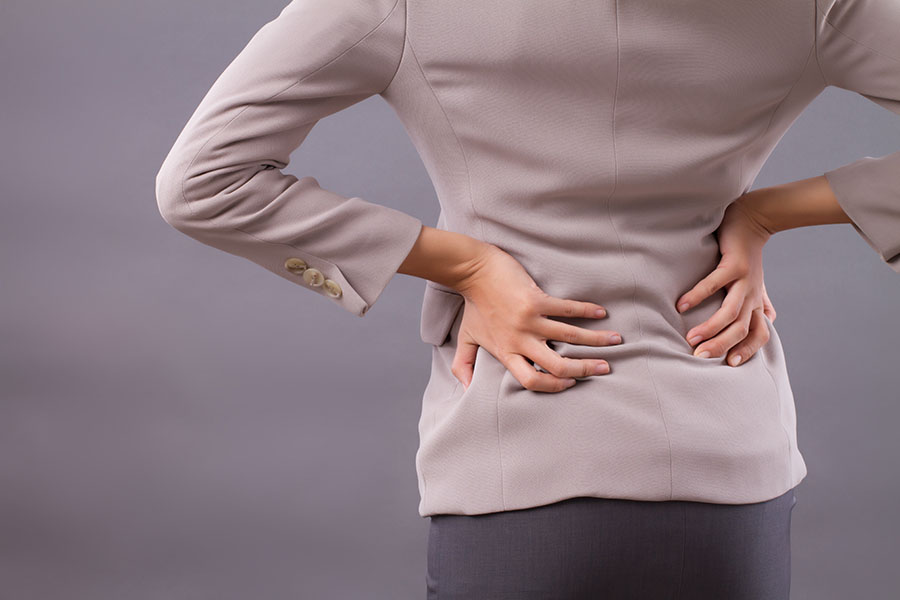Slipped Back
- It was determined that approximately 5% of the patients who applied to the doctor due to low back pain had a slipped back.
Slipped Back
It was determined that approximately 5% of the patients who applied to the doctor due to low back pain had a slipped back. Lumbar slippage is when the spinal bones slide forward or backward over each other. In the medical language, the term spondylolisthesis is used for waist slippage.
Just as the beads on a necklace or a rosary are arranged in a line, one after the other, in a certain order by means of a rope or chain, the bones of the spine are arranged one above the other in a certain order. The joints and ligaments between the bones ensure the proper alignment of the spinal bones on each other.
In case of lumbar slippage, the spinal cord and nerves passing through the spinal canal may be stretched, compressed and under pressure. Due to stretching, compression and irritation, low back pain, pain, numbness and tingling can be seen in the hips and legs, mimicking the symptoms of herniated disc. In rare cases, the patient's urination and defecation functions may be affected due to nerve compression due to lumbar slip.
Lumbar shift of the joints between the vertebrae;
- It may be due to many reasons such as congenital disease, damage due to an old accident or impact, joint fractures that we call stress fracture due to strain, joint inflammation or rheumatism.
- Lumbar slippage can also develop due to small fractures called stress fractures that develop unnoticed in the joints between the spine bones due to excessive strain on the waist during some sports activities such as gymnastics and weight lifting, in children or young people who start doing sports.
- Elderly people can also develop lumbar sprain due to wear and tear of joints and ligaments, whether or not they have a stress fracture.
How is it diagnosed?
Normal waist films are usually sufficient for diagnosing waist slippage. Knowing whether the slip between the spine bones of the patient increases with bending forward and backward is very important in terms of treatment planning. Therefore, X-ray films should be made at different positions of the spine. Computed Tomography can be done to look for stress fractures that are not always easy to detect on normal X-ray films. With MRI, the structure of the spine, the condition of the joints and nerves, nerve compressions are examined.
How is it treated?
The treatment of lumbar sprain begins with the elimination of the causes that force the lower back, leading to the development of fractures or cracks in the spine joints, and the restriction of movements that force the lower back.
For the treatment of low back slippage, treatments such as painkillers, physical therapy applications, reducing the load on the waist by losing weight, strengthening the waist and abdominal muscles should be tried in patients whose complaints are not severe and the slip is not severe.
If a satisfactory regression can be achieved permanently for the patient in the pain and similar complaints caused by lumbar slippage with the simple treatments at the beginning, there is no need to perform a lumbar shift surgery.
Do you need surgery?
If pain and other complaints cannot be eliminated permanently with medication and similar first-line treatments, If more mobility is detected between the spinal bones than normal, If there is irritation or damage due to pressure on the spinal cord and nerves, lumbar shift surgery should be performed.
It is important to decide whether there is an abnormal degree of movement between the vertebrae in order to decide on lumbar shift surgery.
How is Waist Slip Surgery performed?
Lumbar sprains are surgeries that are considered extremely risky and are generally feared by the public as if I will be disabled or paralyzed.
On the one hand, the experience of the surgical team, and on the other hand, the technological possibilities used during the operations and making the operation safer, significantly reduce the risks of the operations. Lumbar shift surgery is performed to remove the pressure on the spinal cord and nerves on the one hand, and to ensure that the spinal bones stand on each other in a smooth and balanced manner, on the other hand.
In order to remove the pressure on the spinal cord and nerves and to relax the nerve tissues, some of the bone tissue that presses can be filed or removed during the surgery. In order to ensure that the vertebral bones are aligned in a balanced way and fused on each other without causing pain, it is necessary to use systems that fix the bones on each other correctly, known as screws or platinum, during the surgery.
After the lumbar shift surgery, it is necessary to use a lumbar corset until the bones begin to fuse together properly. Then, exercises that will strengthen the waist and abdominal muscles are recommended to the patient.
Click to get treatment at Deva Hospital!




